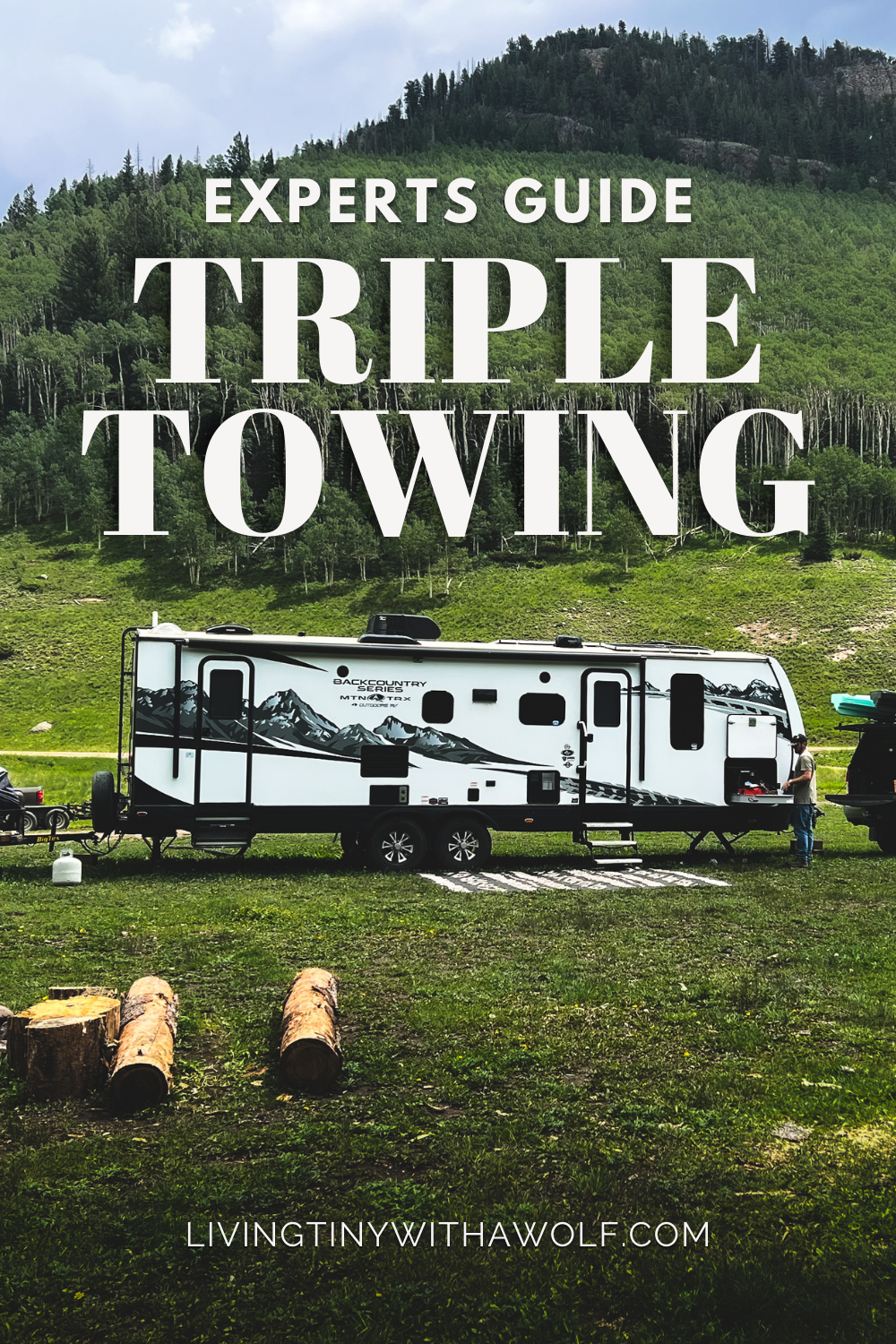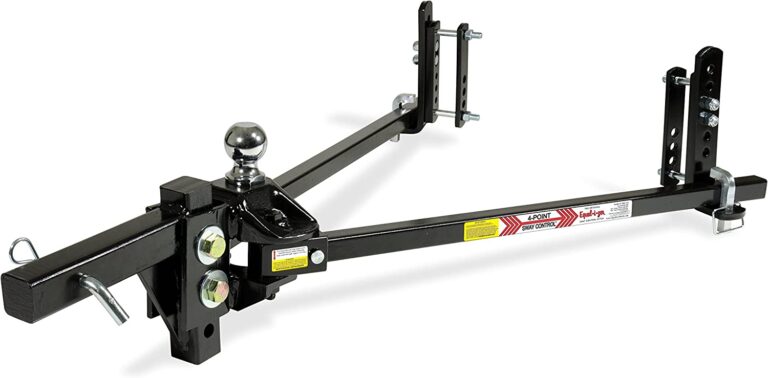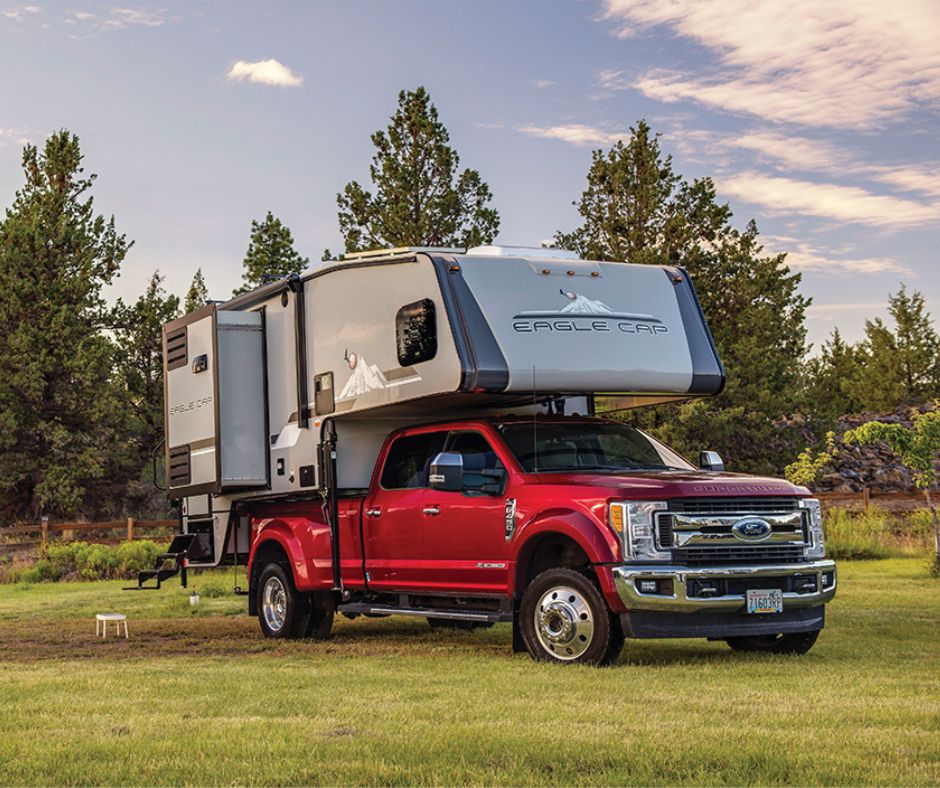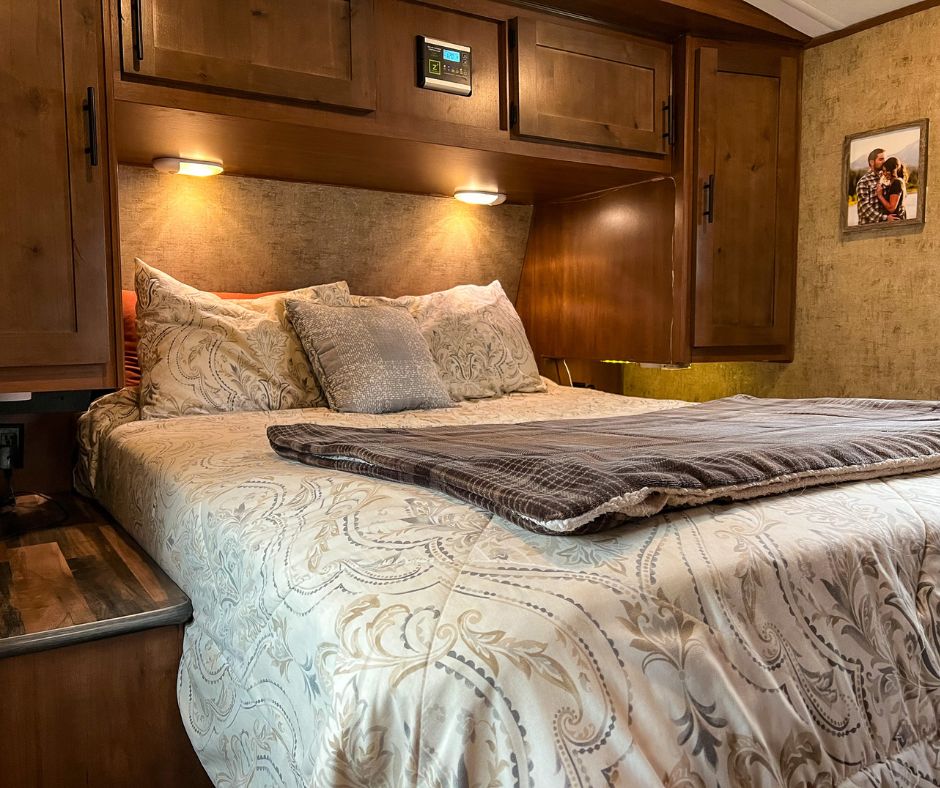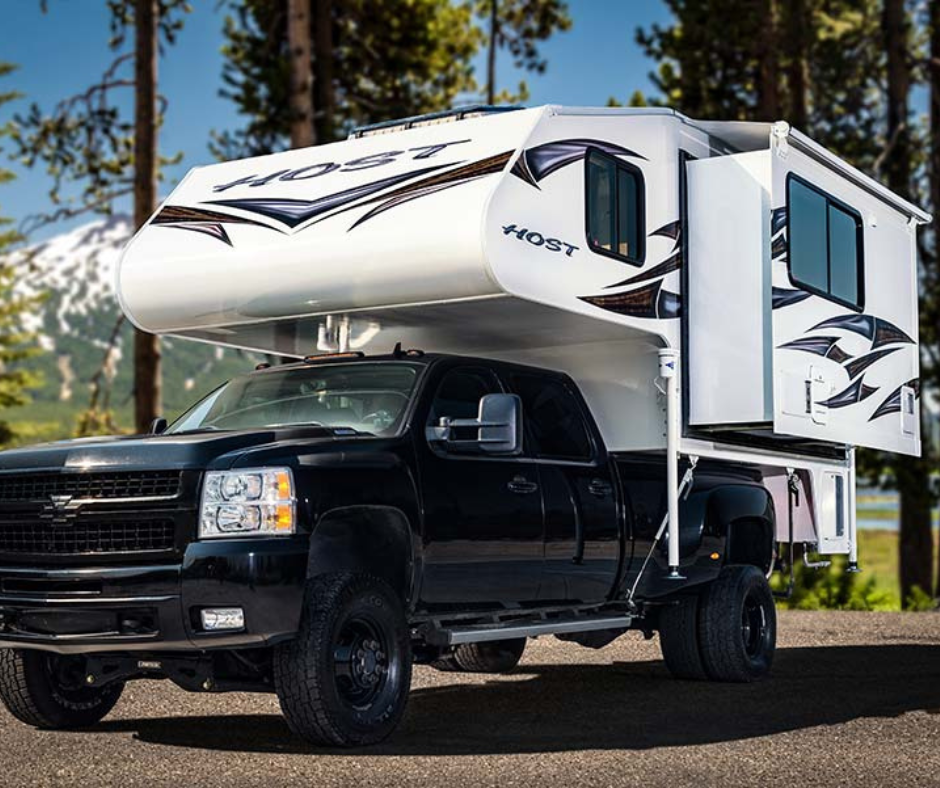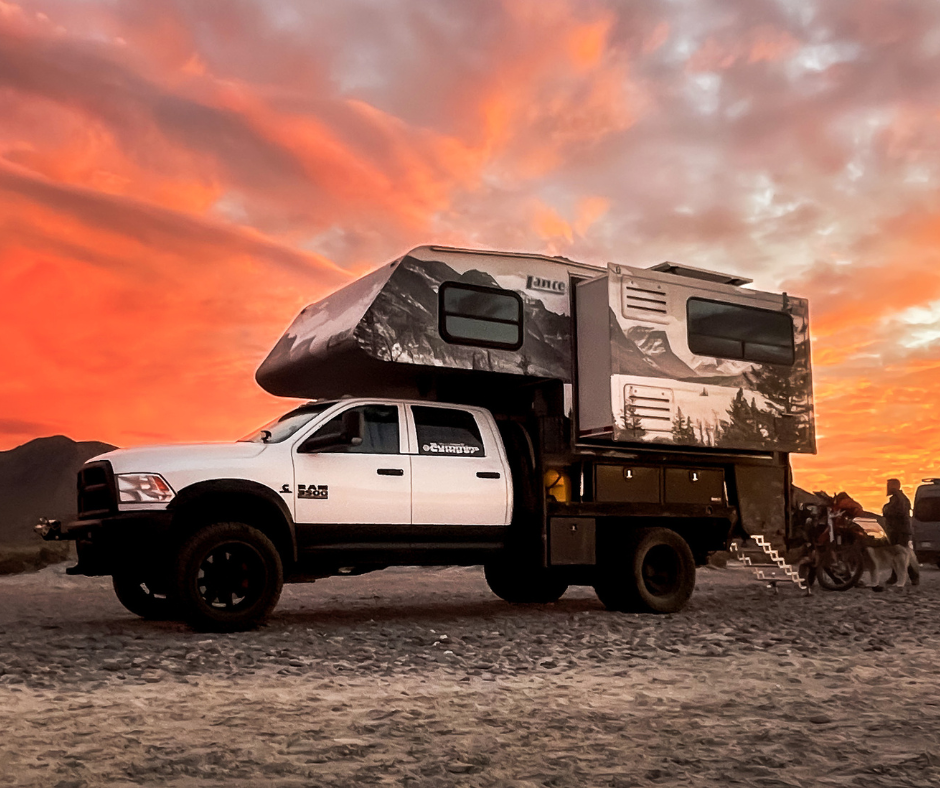Triple Towing: Your Guide to Pulling Two Trailers with One Tow Vehicle
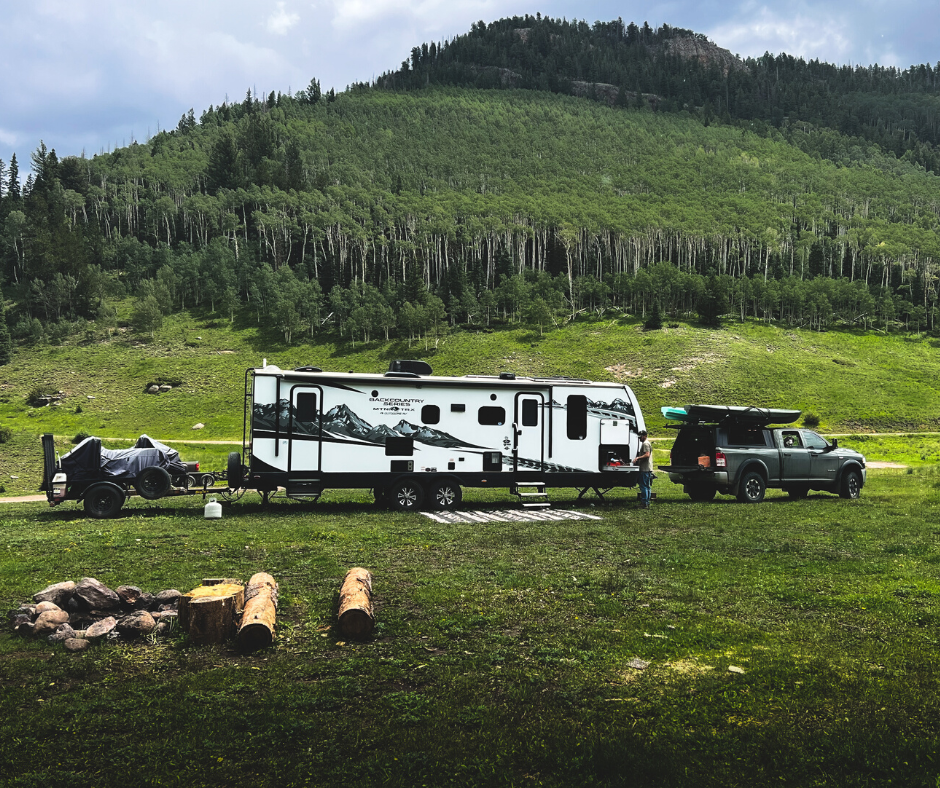
Triple towing, AKA, the art of hauling not one, but TWO trailers behind your trusty tow vehicle, is a popular and efficient way to transport all your toys and equipment on the road.
But don’t be fooled—triple towing isn’t as simple as hooking up two trailers and hitting the road.
As seasoned nomads who’ve been living the triple tow life for two years now (yup, you read that right), we’ve learned a thing or two about the ins and outs of this unique setup.
Our triple tow setup includes our Ram 2500 Power Wagon, a 28ft bumper pull travel trailer, and a separate dirt bike hauler, making for a seriously long rig (65ft total) that turns heads everywhere we go.
We’re rocking the full-time RV triple tow lifestyle, and we’d love to share our knowledge with you!
We’ll discuss the basics of triple towing, including what it is, the types of trailers involved, the requirements and restrictions, and the benefits and drawbacks. We’ll also provide some tips and tricks to help you successfully and safely pull two trailers with one tow vehicle.
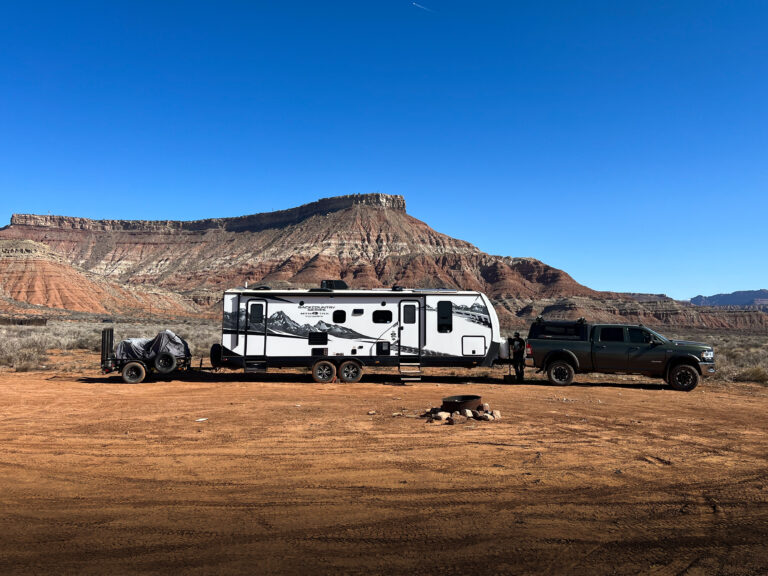
Table of Contents
ToggleWhat is Triple Towing?
Triple towing is the ultimate RV convoy! It’s when you hitch not one, but TWO trailers together. You’ve got your tow vehicle leading the way, your travel trailer in the middle, and then a third trailer attached to the back, carrying anything from an ATV hauler to a boat trailer.
Types of Trailers Involved in Triple Towing
The two trailers involved in triple towing can be any combination of boat trailers, ATV trailers, motorcycle trailers, RV trailers, and other types of trailers. It’s important to note that not all trailer combinations are suitable for triple towing
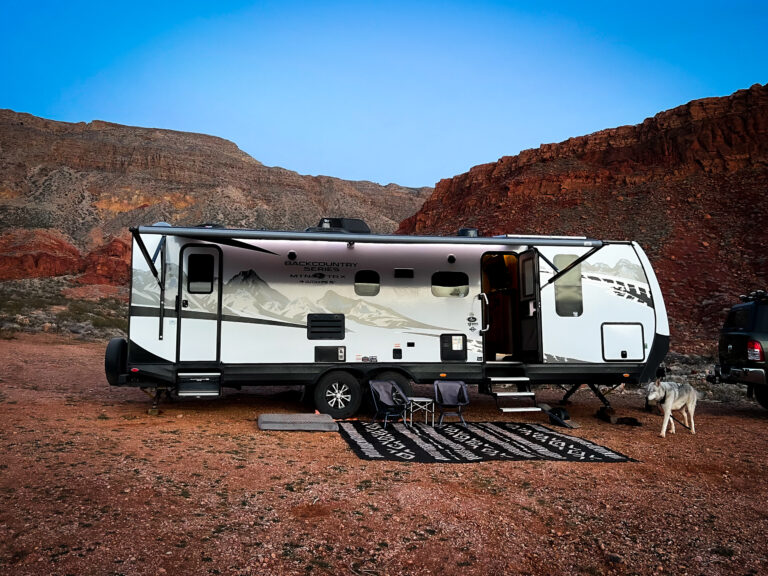
Requirements and Restrictions for Triple Towing
Triple towing is not allowed in all states and provinces, and the legal requirements and restrictions vary depending on the location.
Some common restrictions include the maximum weight and length of the two trailers, the distance between the trailers, and the type of tow vehicle.
It’s important to check the local regulations before attempting triple towing, and to follow all the rules and guidelines to ensure a safe and legal trip.
Triple Towing Laws by State
Triple towing is regulated by state and local laws, and the rules and restrictions can vary from state to state.
In the United States, some states that allow triple towing include: Alaska, Arizona, Arkansas, California, Colorado, Connecticut, Hawaii, Idaho, Indiana, Iowa, Kentucky, Louisiana, Minnesota, Missouri, Michigan, Montana, Nebraska, New Mexico, North Carolina, North Dakota, Ohio, Pennsylvania, South Carolina, South Dakota, Tennessee, Utah, and Vermont.
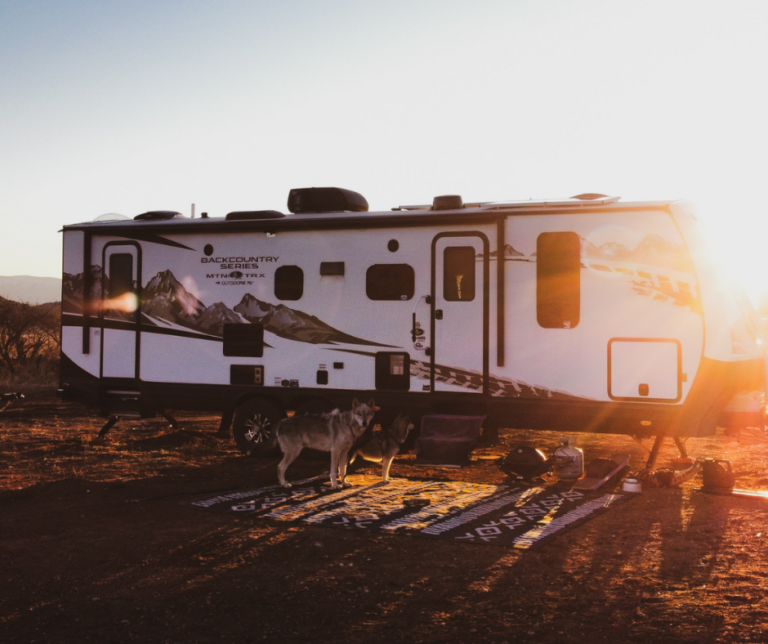
Benefits and Drawbacks of Triple Towing
Triple towing has become increasingly popular in recent years with many people opting to attach a third trailer behind the one they are already towing. This can be an efficient way of transporting recreational toys, but it does also come with its own challenges and risks.
Personally, I’d recommend triple towing for experienced drivers. I would always advise that the highest level of caution is maintained while doing so due to the extra risk factors involved. Let’s explore some pros and cons of triple towing:
Benefits of Triple Towing
Convenience: Triple towing allows you to transport all your toys, gear, and equipment in one trip, making it a convenient and efficient way to travel.
Space Savings: Triple towing frees up space in your RV or main trailer, as you can store your toys and gear in the second trailer, leaving more room for living and sleeping.
More Versatile: With triple towing, you have the flexibility to bring along more items and to enjoy a variety of activities, such as camping, off-roading, and watersports.
Drawbacks of Triple Towing
Length: When it comes to the length of your RV, things can get a little tricky. When you’re hauling two trailers behind your vehicle, it can make your setup quite lengthy. Depending on the size of your RV and the trailers you’re towing, you could easily end up with a rig that’s 60 feet or longer! That’s longer than the average blue whale, by the way.
Safety Concerns: Triple towing can be dangerous if not done properly, as the added weight and length of the setup can make it difficult to handle, especially in windy or hilly conditions.
Legal Restrictions: Triple towing is regulated by local and state laws, and it’s important to check and follow the rules and guidelines. In some cases, triple towing may not be allowed, or there may be restrictions on the length and weight of the setup.
Additional Cost: Triple towing may require additional equipment and accessories, such as backup cameras, sway bars, and weight distribution hitches, adding to the overall cost of towing.
Lots of Scouting: While having all that extra space can be great for stretching out and enjoying the open road, it can also be pretty inconvenient at times. For one thing, finding a spot to park your massive rig can be a challenge. You may need to scout out larger parking lots or even take up multiple spots to accommodate your setup.
Turns are hard: And let’s not forget about the turns! Making sharp turns with a triple-towed RV can be like trying to maneuver a cruise ship through a narrow canal. You’ll need to take your turns extra slow and wide to avoid clipping the curbs or other obstacles along the way.
Don’t even think about backing up: Backing up with a single trailer can be challenging enough, but backing up with a triple tow is a whole different ballgame. In fact, many experienced RVers would advise against attempting to back up a triple tow altogether, as it can be incredibly difficult and even dangerous in some situations.
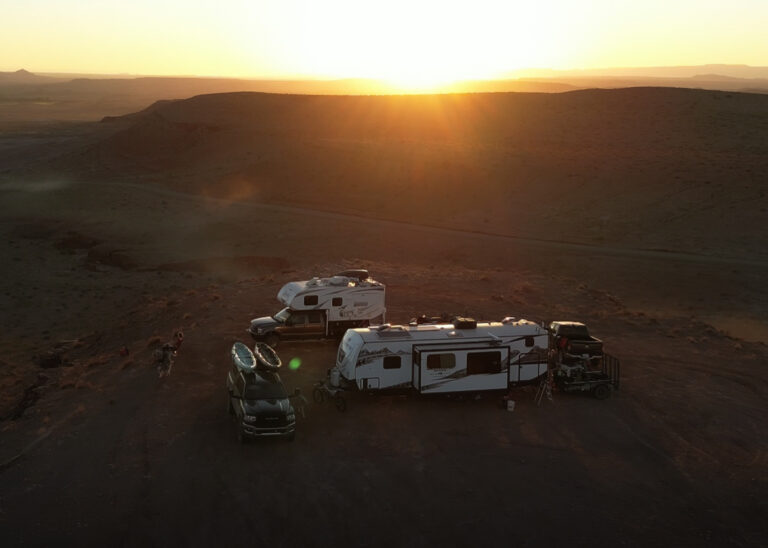
Is Triple Towing Safe?
Triple towing, as the name suggests, involves towing not just one but two trailers behind your vehicle. And while it’s certainly possible to do so safely, it’s also true that it comes with a unique set of challenges and risks.
For starters, triple towing can make your rig much longer and heavier than a typical RV setup, which can make it harder to control and maneuver. And when you’re driving on crowded highways or navigating narrow streets, those extra trailers can make it more difficult to see what’s going on around you.
But that’s not to say that triple towing is always a disaster waiting to happen. With the right preparation and attention to safety, it can be a fun and rewarding way to travel. Just be sure to follow a few key tips to keep yourself and others safe.
The safety of triple towing depends on the driver’s ability to handle the setup and the limitations of the vehicles involved. Before you attach a second trailer, it’s important to understand the capacities of your towing vehicle and to make sure you are towing within its limits.
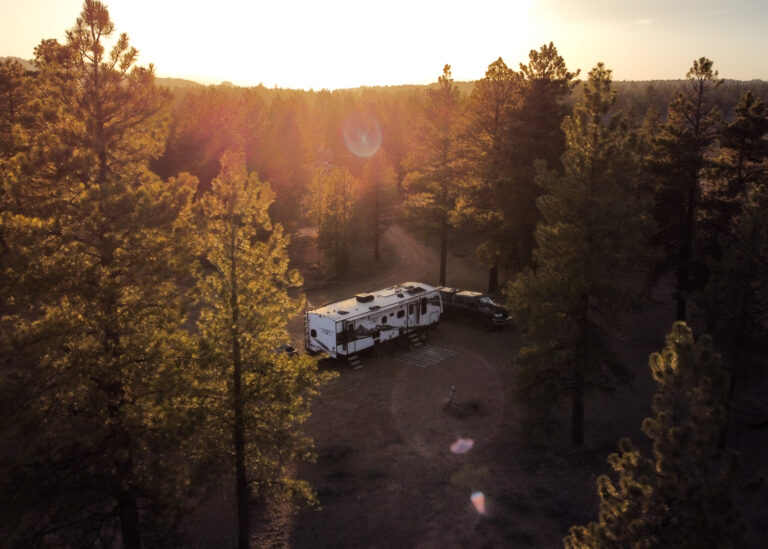
Our Tips and Tricks for Successfully Triple Towing
Triple towing can be a great way to transport all your toys and gear, but it also requires careful planning, preparation, and attention to detail. Here are some tips and tricks to help you successfully and safely pull two trailers with one tow vehicle:
Choose the Right Tow Vehicle
First and foremost, you have to make sure that your tow vehicle is up for the job. That means that your vehicle should have an adequate amount of horsepower, torque, and braking power in order for it to handle the additional weight and length of two trailers. Consider upgrading the transmission, brakes, tires, and suspension if necessary.
Google Maps is Your New Best Friend
Before embarking on a trip, I always take advantage of its features, such as looking ahead for gas stations and using the satellite view to ensure that we have enough room to maneuver our triple tow setup. This helps me avoid any potential issues and allows us to plan our route with confidence.

Scout Campsites Ahead of Time
When triple towing, it’s crucial to have enough space to turn around and maneuver, which can sometimes be a challenge.
That’s why it’s important to scout out potential camping spots ahead of time, to make sure there’s enough room for you to park and turn around safely.
This can involve checking the size of the campsite and the layout of the surrounding area to ensure that you have enough room to maneuver your rig.
Invest in a Sway Bar
Sway bars are essential for preventing the trailers from swaying and bouncing, especially in windy or hilly conditions. They work by transferring the weight from one side of the towing setup to the other, to keep the trailers in line. Choose a sway bar that is compatible with the weight and length of your trailers, and make sure to follow the manufacturer’s instructions for installation and use.
Choose the Right Hitch and Coupler
The hitch and coupler are crucial components of any towing setup, connecting the tow vehicle to the trailers. Make sure to choose a hitch and coupler that are rated for the weight and type of the items you are towing, and follow the manufacturer’s instructions for installation and use.
Properly Balance the Weight
Distributing the weight of the items evenly between the two trailers is important, to reduce the risk of imbalanced towing and to ensure a smooth and stable ride. Make sure to load the trailers in a way that balances the weight.
Use a Backup Camera
One of the biggest challenges of triple towing is maneuvering and reversing the long setup. A backup camera is a must-have tool, making it easier to see what’s behind you and to maneuver the trailers. Make sure to choose a high-quality camera with a wide-angle lens and night vision capabilities, for maximum visibility.
Follow Local Regulations
Triple towing is regulated by local and state laws, and it’s important to check and follow the rules and guidelines. Make sure to follow the regulations for the length and weight of the towing setup, and for the use of lights and signals. And, when traveling through different states, be aware of any changes in the regulations and adjust your towing setup accordingly.
Practice Makes Perfect
Triple towing takes a little getting used to, especially in terms of maneuvering and parking. Make sure to practice in a safe and controlled environment, before heading out on the road. And, be patient, as it may take some time and practice to get comfortable with the added weight and length of the towing setup.
Triple Towing Final Thoughts
Our experience with triple towing has been a unique adventure. It has allowed us to bring along our favorite recreational activity while experiencing the freedom and flexibility that comes with full-time RV living. Of course, there have been challenges and tight situations along the way, but with careful preparation and a focus on safety, we have been able to successfully navigate the road with our trusty 2500 Ram Power Wagon and our 28ft Outdoors RV travel trailer.
We hope that our tips and tricks have been helpful for those considering triple towing. It’s not for everyone, but for those who are willing to put in the extra effort, it can be a truly incredible way to travel. Just remember to take your time, be patient, and always prioritize safety!
Do you have any tips and tricks for triple towing? Leave them in the comments below!

More RV Guides
